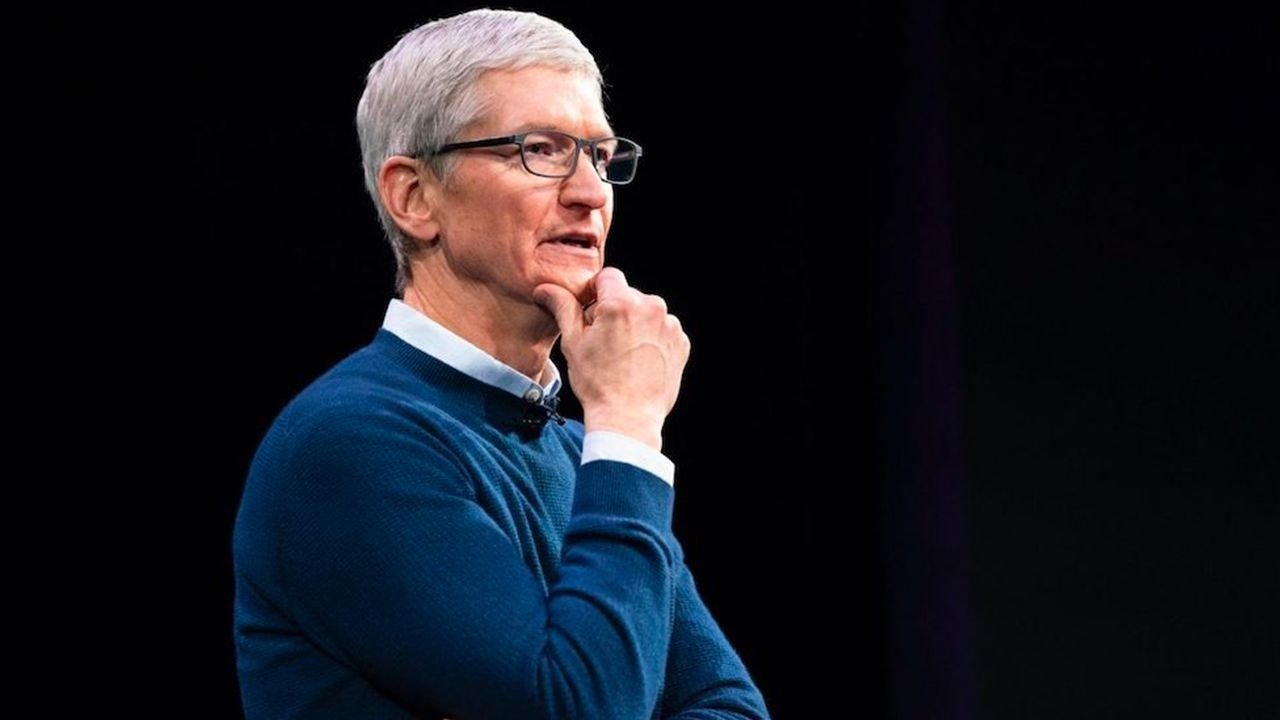UPERFECT UStation Delta Max Review - Two Screens In One


The Highlights
In a previous video, we stated, “AMD, don’t f*** this up.”
It turns out that AMD got close.
Launch day came and went for small, scrappy savior of gaming AMD, pulling itself up from its $163 billion bootstraps to remind all of us that “this one is for the gamers” and that we should all be mindful of NVIDIA’s challenges during AMD’s launch. Well, we’ve been listing NVIDIA’s current challenges for the last 2 months, and now it’s time to look at AMD’s challenges.
Editor's note: This was originally published on March 10, 2025 as a video. This content has been adapted to written format for this article and is unchanged from the original publication.
Steve Burke
Jeremy Clayton
Vitalii Makhnovets
Tannen Williams
Jimmy Thang
We tracked sales and sentiment for the launch of the RX 9070 XT and made the map above. In green, you can see areas of extreme customer satisfaction with AMD. Major cities in the US did pretty well. Far better than NVIDIA.
Now let’s look at the dissatisfied areas:
OK, so it wasn’t the smoothest launch for AMD. And because we didn’t embark on a 5-hour round-trip road trip, we got to experience internet purchasing first-hand. We buy most of our partner models to review rather than request them these days, and that meant we got to experience the absurd reality of it all.
At first, it seemed to go well: We thought we’d gotten multiple orders through at Newegg at 9:08 AM, 8 minutes after launch, and again at 9:28 AM Eastern, which meant we were late up to 30 minutes and still saw seemingly tons of options in stock.
But then we received these messages from Newegg canceling our orders, and it turns out, so did literally hundreds of other people.
When we tried to buy GPUs at MSRP from Amazon, we were met with this:
We did the only rational thing that well-adjusted adults would do: We spent two days obsessively gathering information about prices of GPUs for playing video games.
Only 12 of 51 models that we catalogued across 4 retailers were at MSRP in the US. Of the remaining 39, 5 were 42% over MSRP and 16 were 30-40% over MSRP, which is worse than we’ve seen in most prior GPU launches, except for the 50-series.
In some ways, it’s a “normal” launch: There are always models over MSRP. That’s normal. But it felt bad this time because of just how many were so far over MSRP. But the good news is that it wasn’t a paper launch: More like a highly compressed cellulose arboreal composite launch...
But Micro Center enjoyers had a different experience:
We noticed that a Micro Center had 45% of its total inventory at MSRP.
And that seems like a much better distribution of MSRP cards than what was experienced by those of you who live in a small place allegedly called “the rest of the world.” We're told it’s a nice place to vacation.
Today, we’re digging through the evidence we’ve collected to better understand the AMD RX 9070 (read our review) launch and put some context to the absurdity.
We prepared this table of RX 9070 XT (read our review) prices through a combination of data from TrackaLacker and some manual data collection. It shows the card model, retailer, original and updated price (if applicable), how much the price changed, and how much the price is elevated over the base MSRP of $600. Because of the way Amazon aggressively de-lists and removes prices, anything from Amazon is just what we came across in a spot check on the morning of launch. Pricing data may change by the time we publish due to a fluid market.
The average price of all 9070 XT models, ignoring quantity, is $739, or $139 higher than AMD’s base $600 MSRP. With all cards included, that makes the average increase over MSRP 23% by model – with non-MSRP occupying a range from 20% over to a terribly bad 42% over, which is completely insane. Please do not spend that much more for one of these cards. Only 12 of the 51 listings we cataloged were actually at MSRP.
XFX’s Mercury 9070 XTs were the worst, with the Magnetic Air OC variant taking the top spots along with the PowerColor Red Devil Limited Edition at Micro Center. Expressed as an average, XFX’s 9070 XT models all combined were 29% over MSRP. The ASUS TUF cards fill in next at 33% over MSRP. ASRock generally stayed the closest to MSRP, with its cards coming to an average of 11% over MSRP.
Interestingly, Best Buy and B&H show price reductions across a few listings – all of which had extremely elevated initial prices. The worst was the ASUS TUF at B&H for $1,100, later reduced to $800. B&H might be able to argue these were placeholder prices since it’s only selling these GPUs via waiting list, but we can’t be certain.
Best Buy’s situation was similar, with an initial listing price of $950 for the Gigabyte AORUS ELITE, which later dropped to $760. This may coincide with the lime-limited “deal” pricing we saw from Best Buy initially on launch morning, whose “deal” text was later removed. Our understanding is that AMD had a conversation with Best Buy after seeing this, causing the retailer to remove what appeared to insinuate that the launch price was a limited time and that it’d climb later.
Now we’ll move on to the RX 9070 non-XTs. MSRP is supposed to be $550 for these, which we maintain is $50 too high and intentionally creates an upsell.
The good news is that it’s not $550. The bad news is that it’s more.
The average price of all listings is $628, which is $78 higher than the base MSRP of $550, or an average of 14% over. 13 of the 38 cards we gathered info on were at that base MSRP – a better ratio than the XTs. The average increase over MSRP for all 9070s shown here is 14%, with the raised price models in a range from 13% at the low-end for the PowerColor Hellhound at Micro Center, up to the Sapphire NITRO+ at a 31% increase over base price, which was also at Micro Center.
That puts the most expensive 9070 we found at $720, which is obviously atrociously bad. Nobody should pay even close to that for one of these cards.
It’s actually the same price as the ASUS 9070 XT Prime OC at Newegg. At those prices, you’d be better off buying a used NVIDIA GPU on eBay at those prices.
In fact, every single 9070 that wasn’t MSRP was actually more expensive than MSRP 9070 XTs. That’s also insane, and might be another piece of evidence pointing to AMD dropping the MSRP of both of these GPUs at the last moment.
Average increase per board partner is a lot closer for the non-XTs by percentage, to the point that it’s not worthwhile to get into the specific numbers. ASUS was technically the worst.
Overall, adding all the 9070 XTs and 9070s together, the average percent increase over MSRP is 19%. We don’t know whether that’s normal or not for AMD since this is the first time we’ve gathered that data for AMD, but we’ll bring up a point from our NVIDIA “Fake Prices” piece.
The ASUS RTX 4090 Strix – regarded as the most expensive “normal” 4090 – sold for 25% over MSRP. That’s a high-end GPU with a bunch of unnecessary, expensive bells-and-whistles from a company that largely sells its brand image. Tons of these AMD 9070 XTs (and some non-XT) are way across that percentage threshold, again including some at 42% over MSRP. That’s a bigger price hike than the Strix 4090.
In this case, modern midrange GPU price bloat continues, even if it’s not as high as NVIDIA’s 5070 Ti class of GPUs.
According to this detailed product listing sheet from the Dallas Microcenter, which is the only such one we were able to find, we observed 421 out of 920 cards, or roughly 46%, were sold at MSRP. More specifically, 319 of the 705 9070 XTs and 102 out of 215 9070s were listed with MSRP. This accounts for about 45.25% of 9070 XTs and nearly 47.5% for the non-XTs.
As seen in this chart we put together, each manufacturer listed had at least one MSRP card for both variants of the GPU. In these listings, excluding MSRP models, percent over MSRP ranged from 12.73% on the low end to 41.67% on the high end.
It’s normal for AIB partners to charge more than baseline MSRP. They tack-on extra features, they have quality of life options like extra VBIOS, “hellstones,” apparently, and quieter cooling.
What isn’t normal is the amount of upcharge we’re seeing this generation for both NVIDIA and AMD. Both companies’ partners have totally lost the plot, but AMD’s in particular feels bad because it marketed itself as the savior of gaming at affordable prices.
We dug back through decade-old reviews from our own publication, TechPowerUp, Tom’s Hardware, Anandtech, and others. We took prices from launch day of the GTX 1080 Ti and RX 5700 XT (read our review) GPUs to compare their average price increases over baseline MSRP. Remember: There are multiple MSRPs. There’s the base price from AMD or NVIDIA, but then the MSRP for each individual model. What we’re proving is that the cost increase in partner MSRP over baseline has gotten way worse.
Here’s the GOATed GTX 1080 Ti. We reviewed a lot of these. As you remember, the 9070 XT had multiple cards at 42% over MSRP. The GTX 1080 Ti KINGPIN was the only card at 42% over MSRP, technically about 43%, and that’s a specialized XOC card. Those are basically extinct today. Cards of that quality don’t exist anymore.
The next highest is the Lightning Z, which was a competing card to the KP and was 24% over MSRP. In fact, most of the cards of that era were about 7% to 10% over MSRP, including some of the best ones. The EVGA 1080 Ti FTW3 (watch our review) and SC2 (watch our review) were both excellent cards. The 1080 Ti Armor (watch our review) was a basic 1080 Ti for MSRP, but could be converted into an excellent water-cooled card with its reference PCB.
This chart is hugely different from what we just saw in the 9070 and 50-series launches. Partners have gotten out of control.
Here’s the 5700 XT. The 5700 XT had two prices. The first was $450, but after it jebaited itself, it came down to $400 pre-launch. Using the $400 price as the reference since that was launch pricing, the uplift for the cards we found via TechPowerUp and our own prior GN reviews ranged from 3% to 20% increased over MSRP. The $480 Taichi OC+ was among the highest.
There are models we didn’t list for each, but this cross-section gives you cards from all over each stack.
We are confident that data supports the delta against MSRP increasing with time. That means AMD and NVIDIA share blame with the partners for setting possibly unrealistic targets.
We’ll come back to the fake MSRP discussion in a minute. First, it’d help to have perspective on volume and if this was a “paper launch” like NVIDIA’s.
Micro Center can be sort of a microcosm for our inventory report: It’s just one chain and it’s hyper localized, but because we have data for its RTX 50 launch, we can more easily get a like-for-like comparison perspective on AMD’s.
By crawling through web posts and cross-referencing them, we were able to conclude that Micro Center had nearly 12,000 known cards in stock (excluding a few stores we couldn’t find data for).
For reference, this spreadsheet circulated on Reddit after users tallied the Micro Center inventories for the 50-series launch day. The Madison Heights and Sterling Heights stores are actually the same, so subtracting those 10 duplicate entry units from the 5090s and 91 units from the 5080s (read our review), we end up with 223x RTX 5090s and 2,302 RTX 5080s for launch day.
Overclockers UK also posted some numbers. Gibbo from OC UK posted this:
“We do have several deliveries due today and next week, so we might have more available later. We have sold around 5000 units now, warehouse is working very hard to get them all shipped out today.”
That puts us at 12,000 units for a localized store in the US and 5,000 units for a UK-based store. Speaking with someone at AMD off-record, GN learned that AMD and its partners shipped “tens of thousands” of units to the North American market alone, with most of those being 9070 XT GPUs.
The break-out is more interesting: We don’t have the break-out for each store of the 9070 vs. 9070 XT quantities, but of the 11,657 total tallied, we were able to identify the model of 2,528 of them. The split of these is about 22% 9070 non-XT to 78% 9070 XT.
We think this supports the theory that AMD doesn’t actually want to sell the RX 9070 GPUs. We think that’s a model designed to create an upsell to the 9070 XT, like a decoy product.
AMD did this with the 7900 XT and 7900 XTX (at $900 and $1000), with that difference just months later becoming about $200. Within a year, the difference was at times $250.
To us, it doesn’t matter why AMD does this. We don’t care about AMD’s perspective. All we care about is the consumer perspective. And for the consumer, the reason a company might upsell them is irrelevant -- all they know is they’re getting upsold. Maybe the yields are so good on the XT that they have to fuse products off to even create a non-XT. But if that’s the argument, then they might as well drop the price for the goodwill and price accessibility since there aren’t that many anyway -- but then the 9070 wouldn’t serve what we assume is its purpose, which is to purely function as a tool to create an upsell to a 9070 XT.
We next checked with several system integrators we know. They have a very different perspective on the success of AMD’s launch than retailers for DIY.
The first SI we spoke to sold 50 systems with 9070 XTs and 20 systems with 9070s on launch day. That SI had just over 1,000 systems with RX 9070 and RX 9070 XT cards available for purchase. That’s about 7% of the built systems that were sold on launch day. The SI told us that this was “better than expected” as compared to AMD’s previous launches.
For perspective, that same SI previously told us that they had 20 units of RTX 5090 GPU (read our review) on launch day and that they sold out in about 2-4 minutes. There may be some influence from the wider market there: As users couldn’t buy retail DIY cards, they may have resorted to pre-built machines.
Another SI told us that they sold 7 units of 100 available on launch day. Interestingly, that’s also 7% -- so that’s two very differently sized system integrators at the same sell-through of inventory. The second SI sold about 30 units of RTX 5090 systems on launch day, which was 100% of availability.
It was interesting to gain the perspective of these companies. For the first, it was a better launch than expected -- but only in the context of AMD. For the second, the launch was viewed almost as a dud. In both situations, the average non-enthusiast “video game enjoyer” doesn’t buy AMD, at least in pre-built PCs.
AMD has to make inroads there eventually. For it to do that, it needs unshakeable goodwill in the enthusiast DIY segment so that those people become their evangelists.
Between the two SIs we spoke with, one received 50.5x more AMD GPUs than it received NVIDIA cards on day one, yet it made less revenue from them. The other received about 100x more since they’d only received a single 5090 initially, though they got another 20 or so on launch day, so that’d still put it at 5x more.
Using Micro Center only as another control, they received 4 times as many RX 9000 series cards as RTX 5000 series cards.
By all accounts, this is not a “paper launch” in the way the RTX 5000 series was. This appears to be more normal, in that there was a good amount of supply, just not enough to satisfy initial demand.
So the supply wasn’t fake. Now we question whether the “MSRP” is fake.
Since it seems that AMD panicked when it caught wind of NVIDIA’s January announcements, we can continue the speculation that it never planned to sell the cards at these prices. If AMD is subsidizing partners, distributors, and retailers to hit the lower-than-expected price, then the new concern becomes whether the announced price is “temporary.”
Found via VideoCardz, at least three distributors have publicly stated that MSRP will only apply to the first shipment of cards.
Swedish retailer Inet.se announced in a machine translated post:
“Prices apply only to the first delivery of the respective model. We have now been told how the recommended prices, so-called MSRP prices, work for the launch of the AMD Radeon RX 9070 and RX 9070 XT. We must not say exact prices for the release, but simply explaining they will apply to a limited number of cards.”
The company clarified (which has also been machine translated):
“Our second delivery from PowerColor is already waiting, and we can not offer it at MSRP prices. This means that we will first sell the Reaper models at MSRP price and the stock balance will tick down as usual until the first delivery is sold out. Then, with a certain delay, the stock will be filled with new cards and we will then release the Reaper cards for order again – but then not at MSRP price.
“If you get through an order with MSRP price even if the cards are sold out, we will of course give you that price, but we unfortunately have no opportunities to continue selling cards at MSRP price after the first deliveries are sold out.”
Retailer OCUK, which is part of the CaseKing family, affirmed this in its forum post:
“MSRP is capped quantity of a few hundred, so prices will jump once those are sold through.”
Another UK retailer, eBuyer, reportedly cancelled pre-orders that were processed at MSRP after it sold out of the first delivery of cards. They explained to an affected customer:
“Unfortunately, we were only allocated a limited number of units at the price offered by AMD, and we won't be receiving any additional stock at this price. As you can imagine, this launch has been extremely popular, and we have now sold out at that price. As a result of this, your pre order has been cancelled, and any payments have been reversed.”
A separate eBuyer customer claimed he checked out at £569.99 but the price increased to £664.98 when processing his payment.
eBuyer repeated its previous statement explaining the finite number of MSRP cards and added, “once these were sold we did have to sell these are normal cost [sic].” This would seem to indicate that it’s not simply from taxes being added after the fact.
But AMD has responded. AMD emailed us a statement from Frank Azor, whom you may remember from a previous AMD launch where he bet customers that, unlike its competition, he’d have stock at launch. He bet $10. He lost the bet. We’re not sure if he ever paid it out.
Just like when AMD’s other now-former executive claimed -- we think lied -- about AMD dropping GPU prices after panicking at NVIDIA’s launch as some sort of 6D chess grand jebaiting strategy, AMD has continually used NVIDIA and riled-up a tribal mentality as a shield for its own incompetence.
Emailed to us, Frank Azor said this:
“It is inaccurate that $549/$599 MSRP is launch-only pricing. We expect cards to be available from multiple vendors at $549/$599 (excluding region specific tariffs and/or taxes) based on the work we have done with our AIB partners, and more are coming. At the same time, the AIBs have different premium configurations at higher price points and those will also continue.”
Speaking with insiders, we learned that AMD is “enabling” partners to continue this pricing. When we asked what “enabling” means here, we were told that AMD is working to lower cost to partners either through direct price reductions or through rebates and marketing development fund, or MDF. MDF is money that partners can use to spend on AMD-approved advertising efforts. If you see ads pop-up on YouTube for AMD’s GPU partners at some point, it’s likely that money went from AMD itself and through the partner to trade for artificial suppression of the GPU price.
But based on the statement they sent to the media, it’s still unclear whether cards for MSRP can be expected or not going forward. The statements from distributors and AMD directly contradict one another. AMD can certainly say “launch-only pricing” is inaccurate, but the fact of the matter is the sellers previously mentioned have increased prices.
If AMD really wanted to enforce its MSRP, it could technically not distribute to retailers who don’t honor the price, but that seems unlikely. It doesn’t matter how much AMD claims pricing wasn’t launch-only: By not offering its own reference model for sale as NVIDIA does, it is an accomplice to the murder of its launch price. It has allowed partners to drift from the baseline because they’re all doing it, and without AMD there to undercut them, there’s no anchor to hold it back down. There are pros and cons to this: On the upside, AMD can avoid an EVGA departure situation. On the downside, partners can run wild, and AMD absolutely shares some of that blame. If AMD doesn’t control the final price because it doesn’t sell the final product, it can’t truly guarantee the price it advertised.
For all the sh*t NVIDIA gets, it does have this aspect of things together. It is controlling, overbearing, and levers its position to enforce strict requirements. Even if that’s often a bad thing, it can also work in favor of consumers.
We’re based in the US and are most familiar with that market, so that’s what we’ve looked at so far. But from reading comments from viewers internationally, it’s become clear that you all got screwed the most.
We’ve collected reports from 16 different countries outside of the US, all sharing a similar sentiment of MSRP cards evaporating in seconds to minutes.
A user from Europe reported, “In Europe the ‘MSRP’ cards were all gone within two minutes at most.”
One from Australia says, “By the time the page loaded, it was out of stock.”
Another EU resident expresses, “Gone within 5 minutes.”
A Polish user describes, “Not a single card was MSRP.” And the list goes on.
Various users reported Netherlands retailer Megekko continuously increased prices throughout the launch.
One user explains, “At 15.00 their website crashed, and megekko kept on raising the prices, if im correct they raised the price 3 times in total. Now it costs 1100euro for a 9070xt that has 600dollar msrp.”
Another states, “Bought one from megekko for 930€ and was ‘sold out’ 3 seconds later, only to come back fully in stock but suddenly ANOTHER 100€ added.”
A third user adds that the retailer even increased 7900 XTX pricing.
Because we don’t have actual numbers here, we can’t make any definitive claims. That being said, these reports seem to suggest that non-US distributors, excluding OCUK, didn’t receive as much stock as those in the US did. Specifically, stock being sold at MSRP. Interestingly, this is with new tariffs in the US.
Based on our research, it does appear as if the cost increase in partner models has increased over time. Partners are shipping cards at a percent price higher than baseline MSRP that is greater than what they’ve done historically in the past from what we’ve briefly looked at thus far.
This might indicate that launch MSRPs might be for show. We think the situation boils down to greed. If we’re being charitable to partners in that they are raising prices just to survive the low margins, then the MSRPs are bull****.
When we covered EVGA’s GPUs, we learned that the company was just making $4 per card, so their margin was functionally zero. When NVIDIA let off the pressure to hit certain baseline prices, EVGA would stop selling these lower-margin cards to push pricier models that yielded higher margins. This is something we can’t fault them for given the low margin they had to contend with.
The pricing situation seems to have gotten worse. The argument that the tariffs are behind this is kind of BS because other countries outside of the US are getting screwed even more. In addition, these cards have been stockpiled in the US before the tariffs went into effect. Tariffs will have an effect, but we don’t buy it when you look at the total situation across both AMD and NVIDIA over the last 2 launches. We’re seeing a price creep due to companies realizing they can make more money on video cards, especially since they realize people will pay for it. The end result is that people get screwed. The delta against baseline MSRP is widening.
Microsoft has announced the general availability of hot patch updates for enterprise customers using Windows 11 Enterprise 24H2 on x64 systems. Hotpatching in ARM-based devices running Windows 11 Enterprise is also in the works and currently in public preview.
Hotpatching enables the application of OS security updates in the background, eliminating the need for restarts. This is achieved by patching the in-memory code of running processes, eliminating the downtime associated with traditional updates. The deployment of these updates is controlled through Windows Autopatch policies created in the Microsoft Intune console. Devices managed by these hotpatch-enabled policies will receive hotpatch updates every quarter.
To be eligible for hotpatching, devices must meet specific requirements:
Microsoft notes that hotpatch updates for Arm64 devices are currently in public preview. However, administrators can temporarily disable CHPE support via registry (Path: “HKLM\SYSTEM\CurrentControlSet\Control\Session Manager\Memory Management”, Dword Key Value: “HotPatchRestrictions=1”) to receive the functionality ahead of the official release. For the remaining eligible devices, hotpatching can be turned on or off within the Microsoft Intune admin center by navigating to Devices > “Windows updates” > “Create Windows quality update policy”.
This technology is not entirely new to the Microsoft ecosystem. Windows Hotpatch capability was initially introduced for Windows Server Azure Edition core virtual machines and later became widely available in February 2022 for systems running Windows Server 2022 Datacenter: Azure Edition. Since then, Microsoft has added hot patching to various preview builds of operating systems but has yet to arrive in the mainstream segment. Hopefully, hot patching will eventually be added to Windows 11 Home and Pro editions.
KitGuru says: Do you have a system running Windows 11 24H2? Would you like it if it had hotpatch support?
The post Microsoft is introducing hotpatch updates to Windows 11 Enterprise first appeared on KitGuru.New rumours suggest AMD might be preparing to expand its RDNA 4 graphics card lineup with a new addition. These claims have emerged following reports of low stock for the non-XT Radeon RX 9070 in China, fuelling speculation that AMD might be clearing the way for a new model.
According to ITHome (via VideoCardz), a Radeon RX 9070 GRE is in development. While this initially points towards a China-exclusive release, it's worth noting that AMD has previously offered GRE versions to the global market, as seen with the RX 7900 GRE. Benchlife also corroborated these reports, stating that its sources claim AIB partners are presently preparing the Radeon RX 9070 GRE and are ready for mass production. If so, expect the first RX 9070 GRE graphics cards to emerge in the Chinese market shortly.
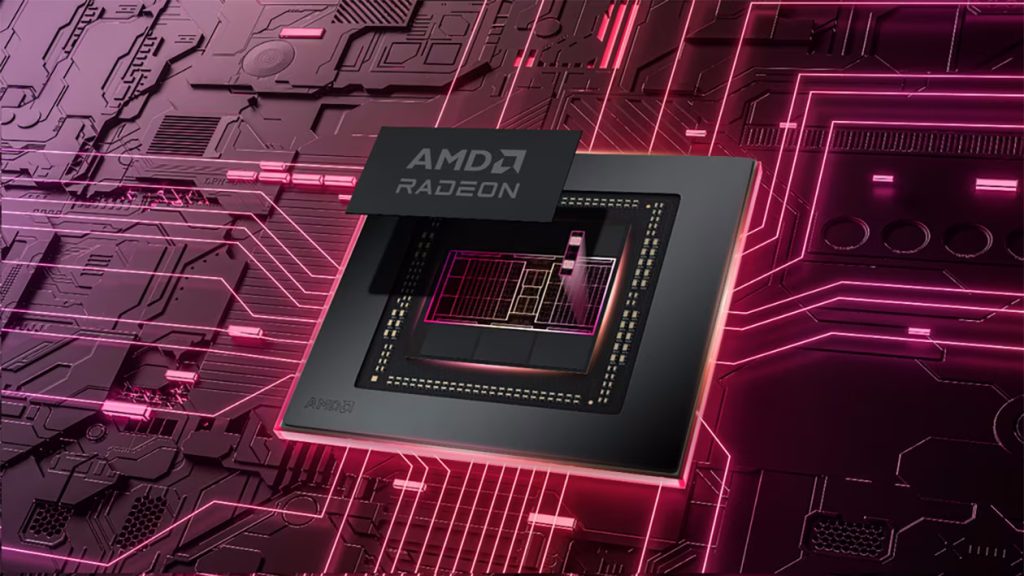
Currently, detailed specifications for this potential RX 9070 GRE remain scarce. However, ITHome and Benchlife speculate it will feature a 192-bit memory bus and a 12 GB GDDR6 configuration. A hypothetical RX 9070 GRE would effectively slot between the RX 9070 and the RX 9060 series in terms of performance and memory configuration, while also aligning with the memory specifications of the Nvidia RTX 5070.
KitGuru says: How much slower than the RX 9070 do you think this supposed RX 9070 GRE will be?
The post AMD might be preparing a Radeon RX 9070 GRE first appeared on KitGuru.MediaTek has unveiled its latest processor, the Kompanio Ultra 910, designed to elevate Chromebook performance. This new chipset emphasises AI capabilities, enhanced power efficiency, and high-speed connectivity, incorporating advanced computing technologies to drive productivity, creativity, and multimedia experiences.
Built on TSMC's 2nd-generation 3nm process, the MediaTek Kompanio Ultra 910 processor aims to deliver exceptional power efficiency, enabling Chromebooks to achieve all-day battery life while providing a significant performance boost. The CPU architecture features an eight-core configuration, comprising a high-performance Arm Cortex-X925 core clocked at up to 3.62 GHz, three Cortex-X4 cores, and four Cortex-A720 cores. This core combination is coupled with 12 MB of L3 cache and 10 MB of system-level cache (SLC).

The 11-core Immortalis-G925 MC11 GPU handles graphics processing, including ray tracing support, enhancing gaming and graphics-intensive applications. The Kompanio Ultra 910 also integrates LPDDR5X RAM (8533 Mbps) to support its processing power. Early benchmark results indicate strong performance, with a Geekbench 6 single-core score of 2600 and a multi-core score of 8000.
The Kompanio Ultra 910 uses an 8th-generation NPU, significantly boosting on-device AI performance. This enables real-time AI image and video generation and achieves up to 50 TOPS AI performance. AI acceleration also improves overall power efficiency by offloading tasks from the CPU and GPU.
The Kompanio Ultra 910 also features Bluetooth 6.0 (dual engine) and Wi-Fi 7, which can support speeds up to 7.3 Gbps. Moreover, this SoC can simultaneously drive up to three 4K displays: one integrated and two external. Lastly, it supports 4K 10-bit video decoding and encoding in HEVC, AVC, VP9, and AV1 formats.
KitGuru says: Although it looks like a capable SoC in single-core and AI workloads, its multi-core score doesn't come near what many expect from a proper, high-end laptop CPU. However, it should be more than enough given what most Chromebook users do in their systems.
The post MediaTek unveils new Kompanio Ultra 910 for Chromebooks first appeared on KitGuru.Nvidia has teased what's to come for GeForce Now users in April. This month, we'll see a total of 21 new games added to the library, including brand-new releases like South of Midnight.
April is shaping up to be a huge month for exciting indie games. The Talos Principle: Reawakened is heading our way on April 10th, followed by Sunderfolk and Clair Obscur: Expedition 33 on April 23rd. Compulsion Games is also releasing its first new game since 2016's We Happy Few – South of Midnight, a highly stylised action-adventure releasing day-one for Steam, Xbox and Windows, as well as via Game Pass.
Here is the full list of titles joining GeForce Now this week:
Later in the month, titles like Aimlabs, Backrooms: Escape Together, Sunderfolk, Night is Coming, Commandos Origins and more will be joining GeForce Now.
KitGuru Says: What do you think of the latest round of games announced for GeForce Now?
The post Nvidia brings 21 more titles to GeForce Now in April first appeared on KitGuru.This week, G.Skill is launching its first high-capacity DDR5 memory kit to reach 8000MT/s speeds.
G.Skill continues to raise the bar for capacities, speeds and latency. The company's new DDR5-8000 CL44 kit offers up to 128GB of memory, spread over two 64GB memory sticks. Getting such a high capacity kit up to the 8000MT/s mark is a huge milestone for G.Skill and paints a promising picture as companies continue to find ways to push the boundaries of what's possible with DDR5.
Engineered for high-capacity overclocked performance, the DDR5-8000 128GB (64GBx2) combines ultra-high memory speed with massive memory kit capacity, surpassing the previous module capacity maximum at 48GB per module.
Dedicated to the continual development of extreme overclock performance memory kits, G.SKILL is also announcing an extreme-speed DDR5-9000 CL48-64-64 memory specification at 64GB (32GBx2) kit capacity. This new memory kit has been validated running on the ASUS ROG MAXIMUS Z890 APEX motherboard with an Intel Core Ultra 7 265K desktop processor.
KitGuru Says: Are you in the market for new RAM this year? What speed and capacity will you be aiming for?
The post G.Skill unveils DDR5-8000 128GB memory kit and DDR5-9000 64GB kit first appeared on KitGuru.If you've been having a hard time finding an RTX 50 series GPU at MSRP price levels, we'd like to steer you in the right direction. Currently, the Palit Infinity 3 RTX 5070 is available at MSRP, and there are some cheap options available for those looking to buy a prebuilt system too.
Both SCAN and OverclockersUK currently have the Palit Infinity 3 RTX 5070 graphics card in stock, priced at £509.99, making it one of the few cards currently available at MSRP price levels.
For those looking to buy a pre-built system, AWD-IT currently has two good deals for UK customers. The AWD-IT Charger PC is available at £949.99 equipped with a Ryzen 5 5600 CPU and an RTX 5070 graphics card. If you can spring up to £1,299.99, you can get the RTX 5070 Ti version of this build instead.
KitGuru Says: Are you currently trying to get hold of a new Nvidia or AMD graphics card at MSRP?
The post RTX 5070 down to MSRP in UK, prebuilt gaming PCs available for under £1000 first appeared on KitGuru.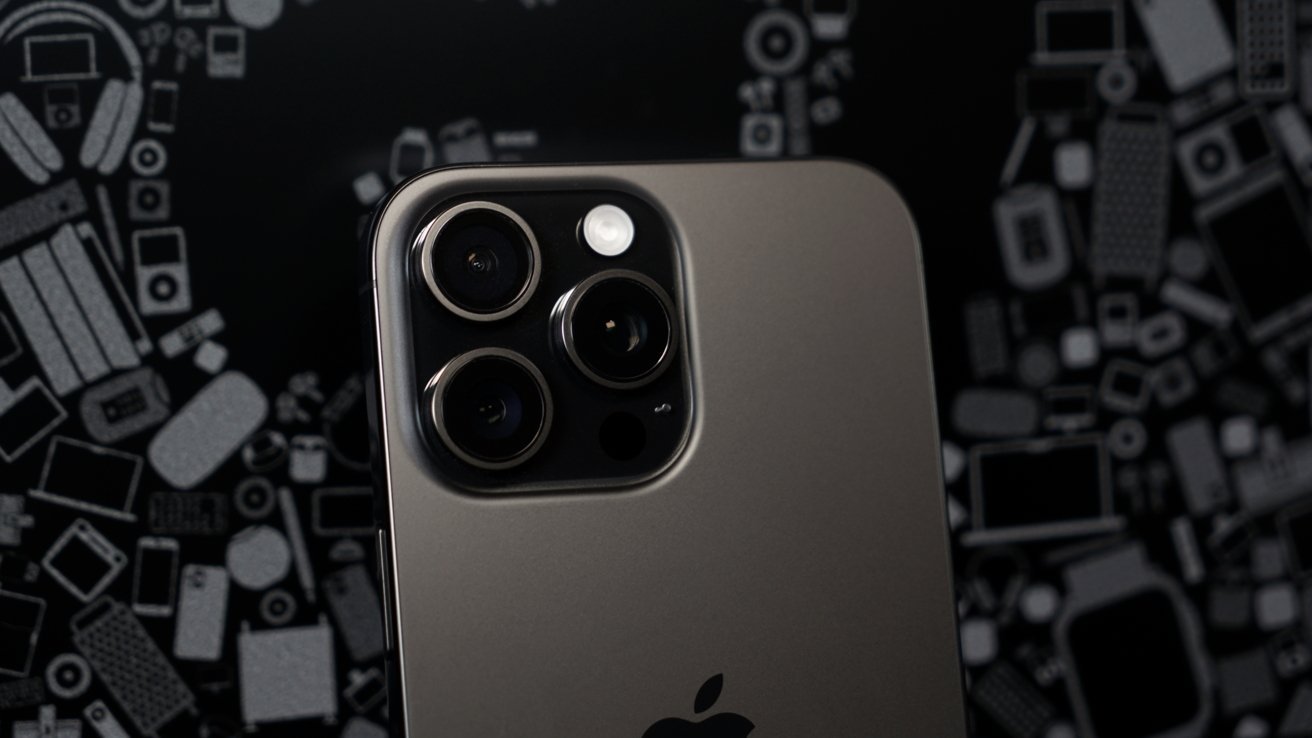
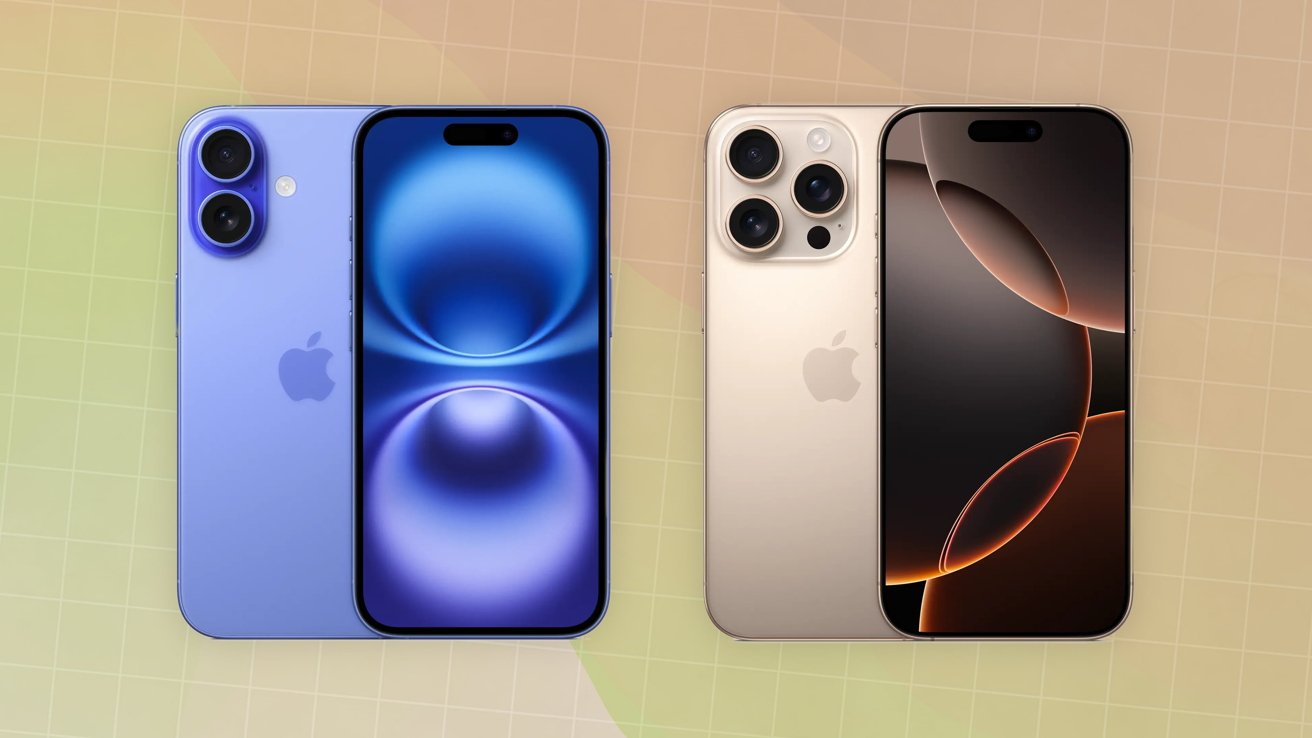


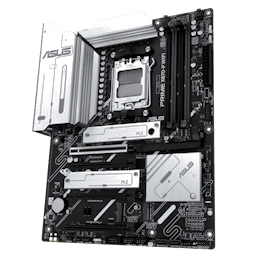
Respawn has quietly had a number of projects in the works behind the scenes over the last few years, but the majority of them have been cancelled. Unfortunately, that list of cancelled projects includes another Titanfall revival attempt.
According to Insider Gaming's sources, internal efforts to get Titanfall 3 off the ground have been shut down twice already, with the most recent cancellation being last year. In 2024, Respawn also cancelled its single-player Mandalorian game, and another project tied to the Apex Legends universe.
While some sources indicate that we are no closer to Titanfall 3, two leakers known in the Apex Legends community, Yorotsukl and Osvaldatore, Titanfall 3 is in development with plans for a 2026 launch, and a potential announcement planned for The Game Awards.
Given how past attempts to bring back Titanfall have gone, I'd encourage fans of the series to take these latest leaks with a pinch of salt.
KitGuru Says: Titanfall 2 has gone down in history as a good game, but it was still a commercial flop. Do you think Respawn will bring back Titanfall at some point? If Titanfall 3 is indeed on the way, hopefully Respawn learns from past mistakes and does not schedule its release in between Battlefield and Call of Duty.
The post Titanfall 3 rumoured for 2026 release first appeared on KitGuru.Nintendo announced months ago that the Switch 2 would be backwards compatible with Switch 1 titles, bar a few limited exceptions. However, it turns out Switch 1 titles aren't running natively on Switch 2 and are instead relying on emulation.
During a developer Q&A on the Switch 2, Takuhiro Dohta explained that the team implemented “something that's somewhere in between a software emulator and hardware compatibility”.
As spotted by Eurogamer, that does mean that some Switch games may not run perfectly on Switch 2 at launch. Some Switch 1 titles have already been revealed to have compatibility issues, including 141 titles with start-up issues and 47 games with in-game compatibility issues.
Some of the titles with compatibility issues aren't exactly small either. Rocket League, Warframe and Dead by Daylight are all listed amongst the titles with start-up issues. On the single-player side, Doom Eternal, Wolfenstein 2, Final Fantasy and Alien Isolation are also listed as having issues.
Other titles, like Ring Fit Adventure and Nintendo Labo won't work with Switch 2 due to peripheral incompatibilities, as the new Joy-Cons won't fit the Labo cardboard kits, or the Ring Fit Adventure Ring attachment.
KitGuru Says: Hopefully the few games with compatibility issues currently can be updated shortly after launch to properly support Switch 2.
The post Nintendo Switch 2 uses emulation to run backwards compatible Switch titles first appeared on KitGuru.
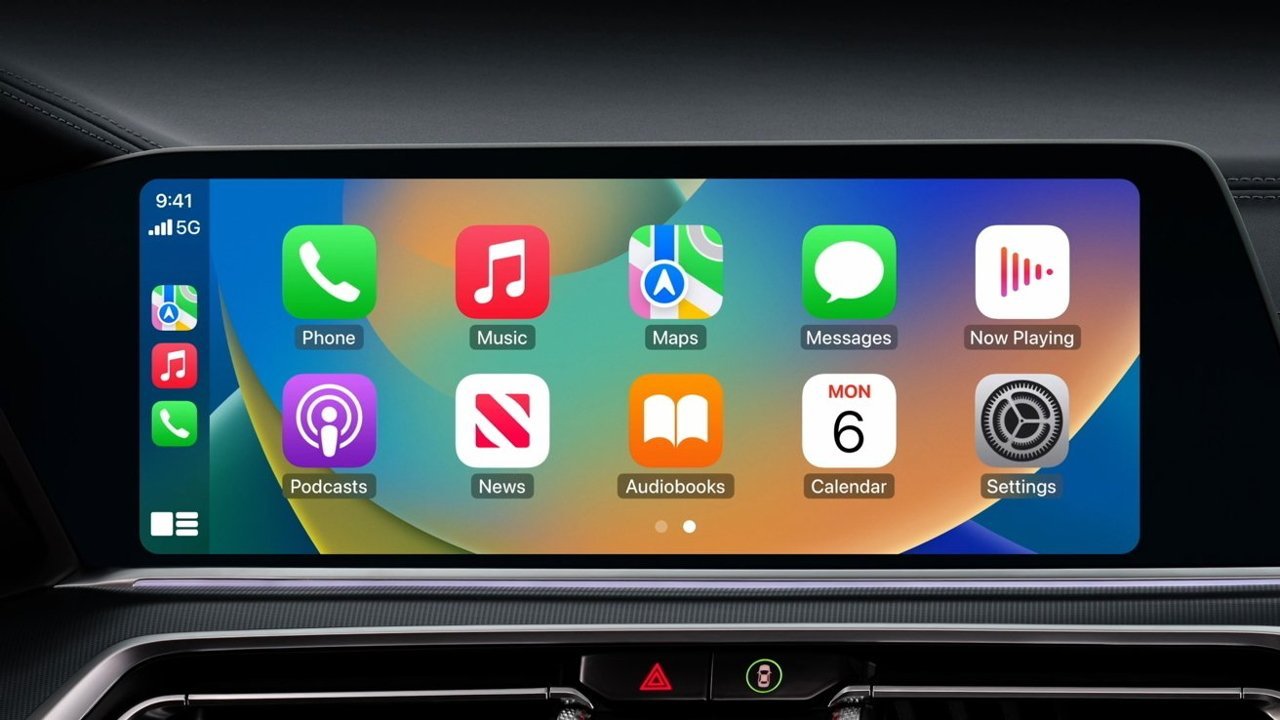
Really unhappy with iOS 18.4.. #Carplay is driving me crazy. Think I will upgrade to the betas. So annoying that were on .4 and the quality is still bunk :/ #apple #ios184 #ios185
— ceadd (@ceaddl) April 2, 2025


Each week, the Epic Games Store offers a title or two for free to all those with an EGS account. This week, players can get their hands on the cute and fun open-world Action-RPG Cat Quest II – with River City Girls set to be given away next week.
Available to add to your library from now until the 10th of April at 4PM UK time, Cat Quest II is the sequel to 2017’s well-liked (though ultimately rather simplistic) open world action-RPG.
Released back in 2019, Cat Quest II builds upon the bones of the first game, adding co-op; new weapon types; more spells; additional abilities; side quests and much more.
Of course, the sequel also uses a familiar-yet-enhanced take on the first game’s aesthetic, mixing 2D art in a 3D world to create a pleasing contrast.
Finally, despite its gimmicky name, Cat Quest is known to feature a rather charming story – and so overall is just a jolly fun time.
As mentioned, Cat Quest II is free to claim from now until the 10th of April at 4PM UK time – at which point it will be replaced by the Illfonic-developed Arcadgeddon and the co-op beat ‘em up River City Girls.
KitGuru says: What do you think of this week’s offering? Will you pick up Cat Quest II? Have you played the first game? Let us know down below.
The post Cat Quest II is this week’s free Epic Games Store title first appeared on KitGuru.Marvel Rivals launched last year to a ton of praise and a great deal of buzz. In the months since, the game has been kept fresh with new characters, cosmetics and more. While Season 2 is introducing two new characters, from Season 3 onwards Marvel Rivals is set to get a new hero every single month.
As part of the game’s big Season 2 showcase, the team at NetEase Games revealed that they are changing their character release schedule moving forward for Marvel Rivals.
While Season 2 will proceed as normal, adding two new characters (Ultron and Emma Frost) over the next three months, from Season 3 onwards players will get to enjoy three additional characters – meaning one a month.
Of course, Marvel Rivals is based on comics and so NetEase should have plenty of inspiration to draw from – be it for characters; maps; powers and more. Even so, adding a new character every single month seems like quite the ask.
Hopefully NetEase are up to the task – especially since they have downsized their team since launch. Full details on Season 2 of Marvel Rivals can be found HERE.
KitGuru says: What do you think of this new release strategy? Are you excited to get more Marvel characters so consistently? Which hero/villain would you want to see in Season 3? Let us know down below.
The post Marvel Rivals will introduce a new Hero every single month moving forward first appeared on KitGuru.The BAFTAs are one of the most prestigious award shows across multiple industries – video games included. Ahead of this year’s gaming BAFTA awards, the British Academy of Film and Television Arts hosted a public vote for the most influential games of all time – with Shenmue taking the top spot.
With the 2025 video game BAFTAs set to go live on the 8th of April, the company has released a list of the top 21 most influential games of all time; celebrating the upcoming 21st annual gaming BAFTAs. As voted by the public, the most influential video games of all time are as follows:
While it is somewhat hard to argue against a public vote, some of these games (and their placements) do give some pause. There’s no denying that Shenmue is an influential game, however the fact that it managed to take the top spot is surprising given its relative lack of awareness in the public consciousness.
On the other hand, Kingdom Come Deliverance 2 literally released just two months ago, and so it is far too early to determine its long-term influence – making its placement at no.7 curious to say the least.
Of course, this is far from a definitive list, and each person’s own rankings will be unique to themselves. Still, there’s no denying that the results are at the very least interesting to read through.
KitGuru says: What do you think of these rankings? What would be in your top 3? Which games would you take off this list? Let us know down below.
The post Shenmue voted as the most influential game of all time by the public first appeared on KitGuru.Back in 2023, following many leaks and rumours, Bungie officially announced Marathon – the studio’s next big multiplayer live-service offering. Since then, we’ve heard little from the project. Finally however, Bungie seems ready to begin showing us more.
Making their very first post on BlueSky, the official Marathon page shared a brief teaser video – giving us very little to go off of. That said, this does seem to suggest that Bungie are gearing up for some sort of announcement.
For context, Marathon was first officially announced by Bungie/PlayStation back in May of 2023. Since then, the team remained mostly quiet, up until October last year in which they gave us a 10-minute developer update (though no game footage was included)
Finally, about a month ago fans began to notice the back-end for Marathon on Steam getting a bunch of updates, leading many to believe that some major news was incoming.
Based on the recent activity on Bungie’s socials, a Marathon showcase appears to be imminent. It’s simply a matter of when, not if.
KitGuru says: What do you think of this teaser? Do you have high hopes for the game? Will we get a release date at this supposed-upcoming showcase? Let us know down below.
The post Bungie begins to tease Marathon once again first appeared on KitGuru.It's been two years since NVIDIA introduced its Ada Lovelace GPUs, kicking things off with the RTX 4090 and finishing up the initial lineup with the SUPER family At CES, the company unveiled its new RTX 50 "Blackwell" family which features a brand new architecture and several changes such as new cores, AI accelerators, new memory standards, and the latest video/display capabilities. NVIDIA has released the fourth entry within its "RTX 50" portfolio, the GeForce RTX 5070. The GeForce RTX 5070 retains its high-end positioning with the green team promising lots of performance at a price point of $549 US […]
Read full article at https://wccftech.com/review/msi-geforce-rtx-5070-gaming-trio-oc-12-gb-gpu-review-exceptional-cooling-faster-than-4070-ti-with-oc/

With CPU package power on an upward trajectory, we are seeing more 420mm AIO coolers hit the market. The latest AIO unit we have for review is the Silent Loop 3 420 from be quiet! It’s the company's first 420mm AIO, featuring a 3-chamber pump design, a high-density cold plate fin stack, and an easy-access filling port. It's also equipped with be quiet!'s premium Silent Wings 4 PWM fans and ARGB lighting. be quiet! says that all this combined will produce low noise, high performance cooling, so let's dive straight into this review and find out if that’s true.
Timestamps:
00:00 Start
00:50 Details / Pricing
02:12 Up close
04:30 CPU Block and Radiator
05:24 Fans
06:54 Accessories and mounts
07:51 AMD Test System / Installation
09:58 Test Results
11:52 Closing Thoughts
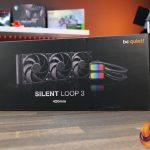

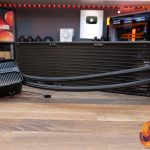
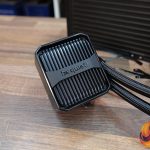
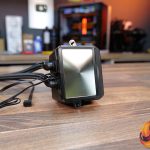
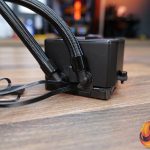
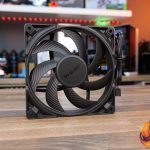
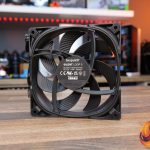
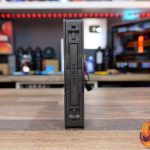
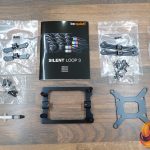
Features:
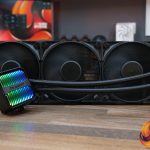
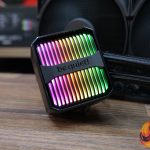
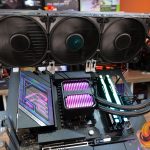

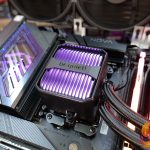
Specifications:

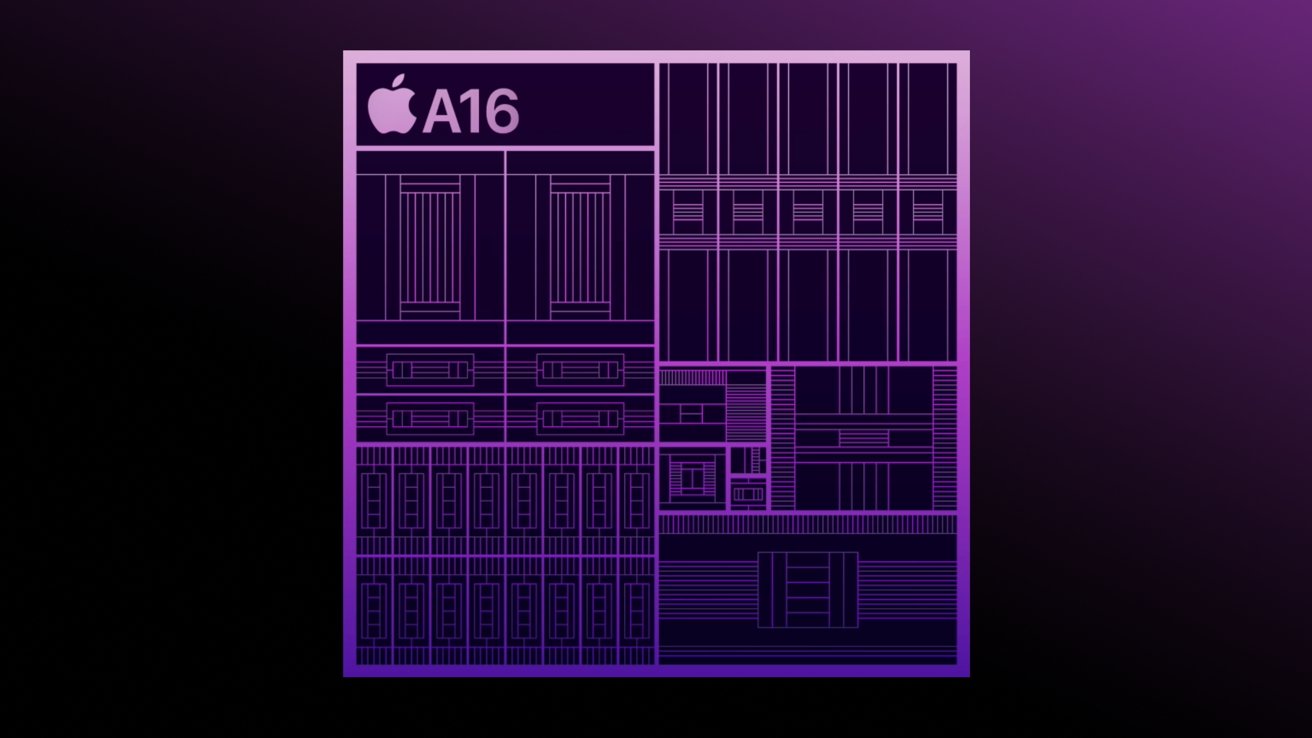

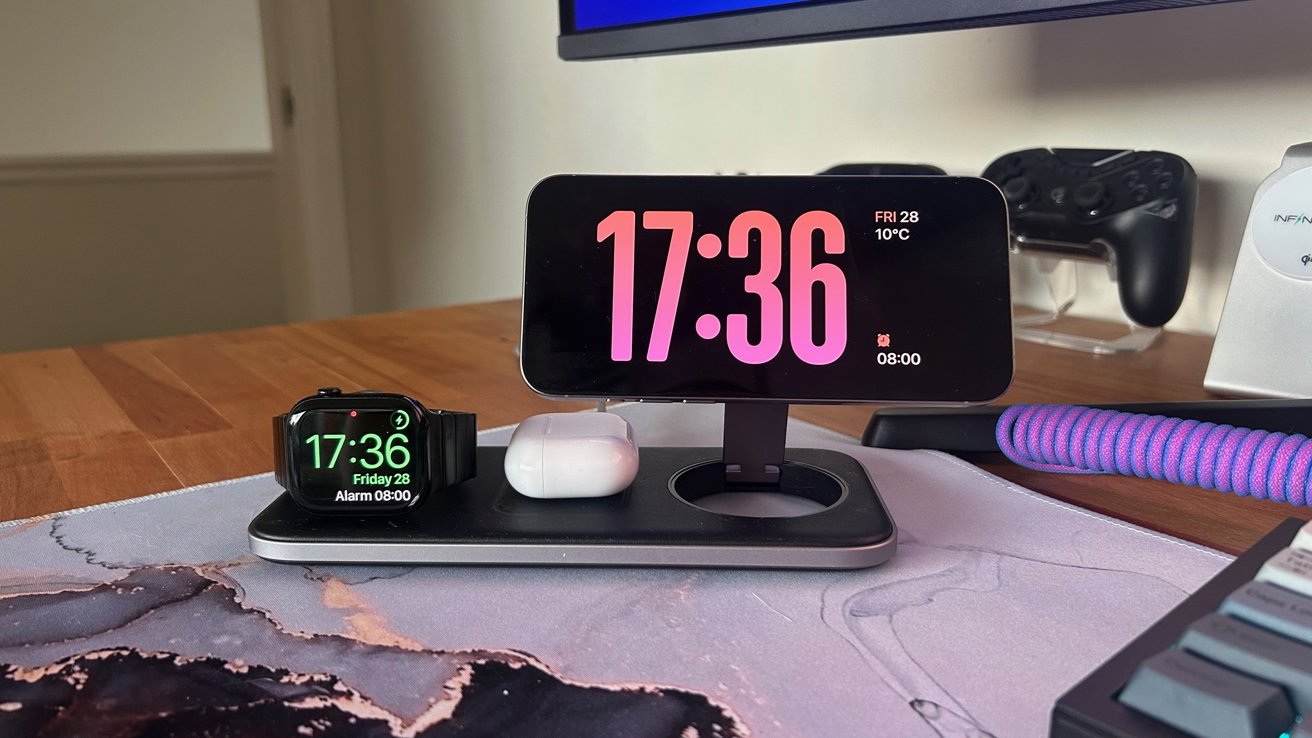

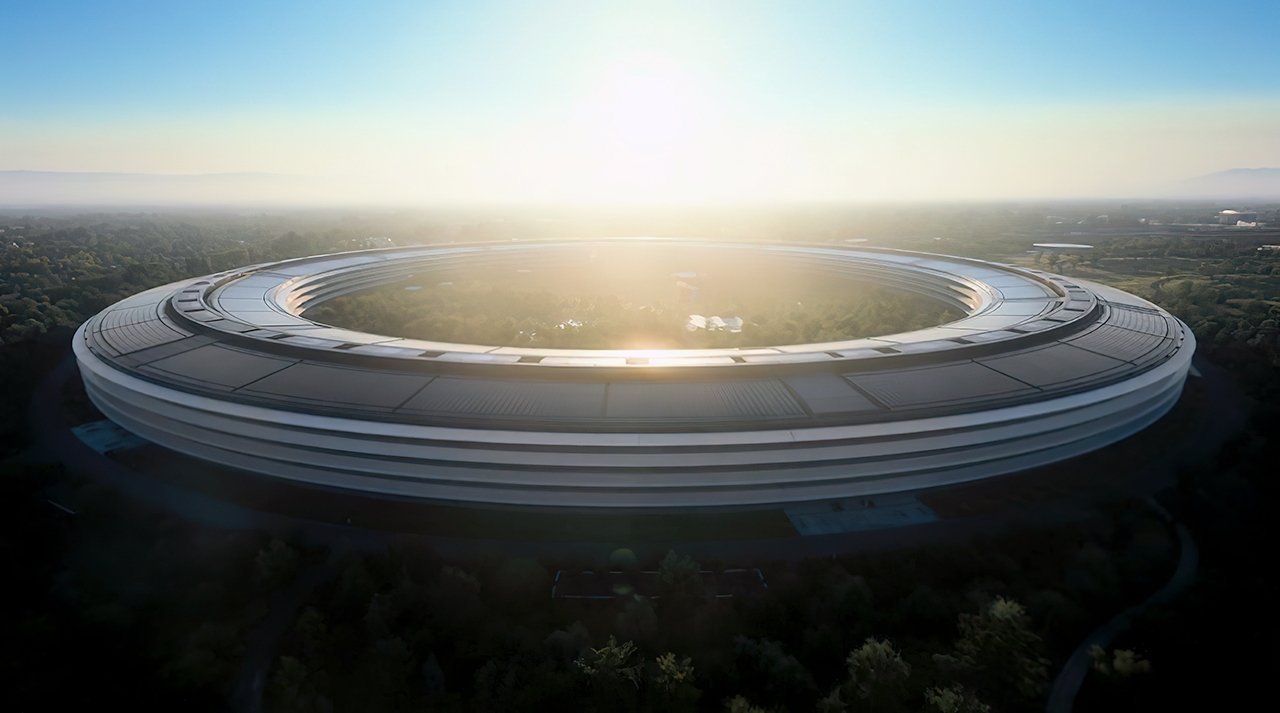
Since December, or more accurately, since the release of Indiana Jones and the Great Circle, there’s been a feeling that Xbox has turned a corner for the better. Following up MachineGames' excellent Indiana Jones adventure was Obsidian, with a more than solid outing in Avowed. Which, in a few days from the time of publishing, will be followed up by Compulsion Games’ latest, South of Midnight, which hopes to keep that momentum going. South of Midnight is the third game in the studio’s history since its founding in 2009 and the first full game the team has made primarily under […]
Read full article at https://wccftech.com/review/south-of-midnight-boring-combat-drags-down-a-beautiful-and-emotional-story/

At Intel Vision this week, Intel provided an update on its CPU roadmap. The Intel Panther Lake CPUs, the first built with Intel's new 18A manufacturing process, are still on track for 2025, but volume shipments won't arrive until 2026.
Speaking on the roadmap update, Intel Products CEO, Michelle Johnston Holthaus, said: “Looking ahead to the rest of the year, we will strengthen our client road map with the launch of Panther Lake, our lead product on Intel 18A in the second half of 2025. As the first volume customer of Intel 18A, I see the progress that Intel foundry is making on performance and yields, and I look forward to being in production in the second half as we demonstrate the benefits of our world-class design and process technology capabilities. 2026 is even more exciting from a client perspective as Panther Lake achieves meaningful volumes.”
Intel positions Panther Lake as a blend of Lunar Lake's power efficiency and Arrow Lake's performance, built on the company's advanced 18A process technology. The rollout will be similar to Lunar Lake, with a limited number of devices available before the end of this year, with a much bigger rollout in the early months of next year.
KitGuru says: Panther Lake may debut this year but finding one in the wild may end up being difficult until Q1 2026.
While Nintendo has not revealed the detailed specifications of the chip powering the Switch 2 console, the company has revealed two crucial bits of information – the GPU has ray-tracing capabilities and DLSS is supported.
At a press event held in New York this week, IGN asked Nintendo for more details about the hardware behind the Switch 2. Nintendo is still being cagey when it comes to the nitty-gritty, technical details, but we did get two key pieces of information out of Nintendo Planning & Development director, Takuhiro Dohta.
For starters, Dohta confirmed that Nintendo does use DLSS upscaling technology, and it will be available to all developers looking to improve their game's performance on Switch 2. On top of that, Nintendo also confirmed that “the GPU does support ray tracing”, so we'll see certain titles making use of things like RT Shadows and RT Reflections.
Unfortunately, without the technical specifications of the CPU and GPU, we can't make any guesses as to how well the Switch 2 should perform with ray tracing enabled. A few titles for the Switch 2 have already been announced as supporting up to 120FPS and 4K/HDR. Chances are, DLSS will be in use to help games achieve those high resolutions and frame rates.
KitGuru Says: While Nintendo is unlikely to reveal the full technical specifications itself, we'll no doubt hear from Nvidia on how it designed the Switch 2 chip eventually.
The post Nintendo confirms Switch 2’s custom Nvidia chip supports DLSS and Ray Tracing first appeared on KitGuru. HP Elite t660 Thin Client: Pricing TBA HP's Elite t660 offers solid performance, plenty of connectivity, and an array of accessories, blurring the lines between a traditional thin client and small form factor edge PC. Impressive Thin Client Performance Robust External Connectivity Passive Cooling Means Total Silence Includes Competent...
HP Elite t660 Thin Client: Pricing TBA HP's Elite t660 offers solid performance, plenty of connectivity, and an array of accessories, blurring the lines between a traditional thin client and small form factor edge PC. Impressive Thin Client Performance Robust External Connectivity Passive Cooling Means Total Silence Includes Competent... 
